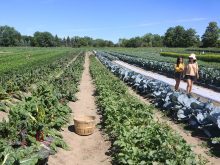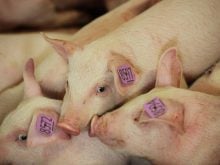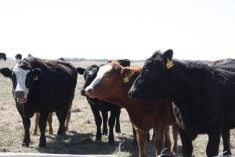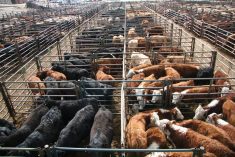Last November, the United States government quarantined the entire state of Texas because of a foot-and-mouth outbreak.
Fortunately, it was all a simulation to see how quickly Canada, the U.S. and Mexico could mobilize if such a serious and contagious disease was reported.
“We performed well but we found we also have to do some fine tuning on policy and procedures over the next year,” said Claude Levin of the health of animals division with the Canadian Food Inspection Agency.
The emergency test included scientists, veterinarians and beef and pork producers.
Read Also

Canada told trade crisis solutions in its hands
Canadians and Canadian exporters need to accept that the old rules of trade are over, and open access to the U.S. market may also be over, says the chief financial correspondent for CTV News.
For cattle producer Arno Doerksen it was a worthwhile exercise.
By regularly testing procedures and reaction times, Canada and the U.S. have developed some of the highest standards and regulations in the world for animal health.
By comparison, Great Britain was slow to respond in the early 1990s when it discovered bovine spongiform encephalopathy in cattle herds. By being overly cautious, not consulting colleagues within the scientific community and delaying information for the public, the disease took hold and became an epidemic before anyone was willing to admit a problem.
“An effective, early response is critical in beating a disease,” said Doerksen, who farms near Gem, Alta.
Canada has a list of 30 reportable diseases and has remained free of major diseases including BSE, foot-and-mouth and swine fever.
Part of their success has been diligence at every level of animal production.
“There hasn’t been a foot-and-mouth outbreak in Canada for a long time, so it’s important they keep their protocol and information current,” said Doerksen.
However, Canada’s good health record is a double-edged sword, said Levin of the inspection agency.
Canada is a large country and there can be communication difficulties. On the other hand, infectious disease spreads slowly because there is considerable distance between farms.
This three-country disease inspection involved about 100 Canadians in Ontario and Alberta who tested their emergency preparedness involving the livestock industry. They worked closely with scientists from Mexico and the U.S. for four days last November using real time responses, then predicting what actions they would undertake within a month, six months and a year.
The simulation mobilized the North American foot-and-mouth disease vaccine bank to which all three countries contribute. The bank holds foot-and-mouth virus antigens that can be converted to vaccine if there is an outbreak in any of the three countries.
During the simulation, health officials were told foot-and-mouth had been confirmed in a swine herd and in a calf in southern Texas. They were also told of sick animals in a southern Texas feedyard.
A decision was quickly made to order the slaughter of all susceptible animals within a 1.6 kilometre radius of an infected swine herd also in southern Texas.
Compensation plans were discussed and the quarantine was expanded.
Part of the simulation included a report of 30 Mexican steers arriving at a feedlot near Dallas.
The order went out to kill them and incinerate the carcasses. Their ashes were to be buried to prevent spread of disease.
The next day the simulation announced the truck hauling the Mexican steers broke down. The animals remained on board overnight. Reports said that cattle pastured near the truck repair site developed signs of the disease.
As animals moved around the state, more simulated cases were reported.
Information was gathered for farmers to warn them of the disease, its symptoms, how to avoid it and what action to take if they suspected their animals had the disease.
Doerksen said a major conclusion from this simulation was the importance of co-operation.















